Are you wondering how to connect a headphone amp to an audio interface?
Or when you need a headphone amp?
Then you’re in the right place…
We’ll discuss two quick ways to connect your amp to your interface – including the pros and cons for each.
Also, we’ll provide a few reasons why you should consider using a headphone amp in your home studio. And how to know which one to get.
Let’s get straight into it.
Overview
To connect a headphone amp to an audio interface, link your audio interface’s main output to your amp’s input – using a TRS to dual TS cable. You can also connect through the headphone output on your audio interface and use a TRS to TRS cable instead.
How to Connect a Headphone Amp to an Audio Interface
1. Using a TRS to dual TS cable, connect your headphone amps input to your audio interface’s main outputs.
2. Connect your headphone amp’s input to your audio interface’s headphone jack. You can use a TRS cable.
3. For a headphone amp with RCA inputs, use a dual TS to dual RCA cable or TRS to dual RCA cable to connect to your audio interface’s outputs.
3 Ways to Connect a Headphone Amp to an Audio Interface
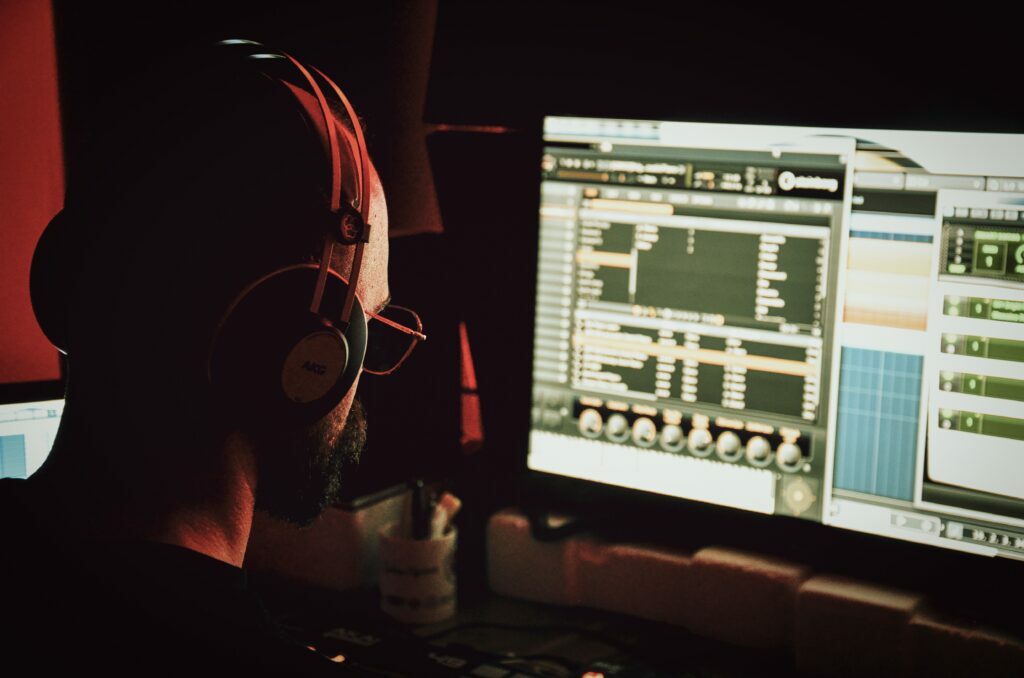
1. Connect your Audio Interface’s Main Output to your Headphone Amp’s ¼ Inch Input
Here’s What you Need:
- Headphone amp with a ¼ inch input
- Audio interface with ¼ inch outputs
How to Connect your Headphone Amp to your Audio Interface in 4 Simple Steps:
Step 1: Insert your red TS line into your audio interface’s right output
Step 2: Insert your black TS line into your audio interface’s left output
Step 3: Plug the TRS line one the other end into your headphone amp’s input
Step 4: Connect headphones into an output on your headphone amp
Benefits
- You get a clear signal with no noise or distortion.
Downside
- Your interface’s main outputs is also where you connect your studio monitors.
Monitor Box
You can use a monitor box to connect your headphone amp and monitors simultaneously.
It splits your main output into several channels – letting you connect multiple devices.
However, you can also link your amp through your headphone output.
You won’t need a control box with this method.
2. Connect Audio Interface Headphone Output to ¼ Inch Headphone Amp Input
Here’s What you Need:
- Headphone amp with ¼ inch input
- Audio interface with ¼ inch headphone jack
- Cable: ¼ inch TRS to TRS
How to Connect in 4 Easy Steps
Step 1: Insert one end of your TRS cable into your audio interface’s headphone jack
Step 2: Insert the other end into your headphone amp’s input
Step 3: Connect headphones to your headphone amp output
Step 4: Adjust the headphone volume knob on your audio interface
Benefits
- You can connect a headphone amp to your interface without a control box.
Downside
- Using your headphone output can add noise to your signal. However, this noise is unlikely to be noticeable.
Difference Between Connecting Amp through Line Out and Headphone Out
There isn’t much of a noticeable difference between using your headphone output or line out.
However, it’s important to note that headphone outputs have built-in amps.
Connecting your amp through your headphone out will amplify your signal twice, potentially adding distortion.
Conversely, line outputs don’t have built-in amps.
3. Connect Audio Interface Output to Headphone Amp RCA Input
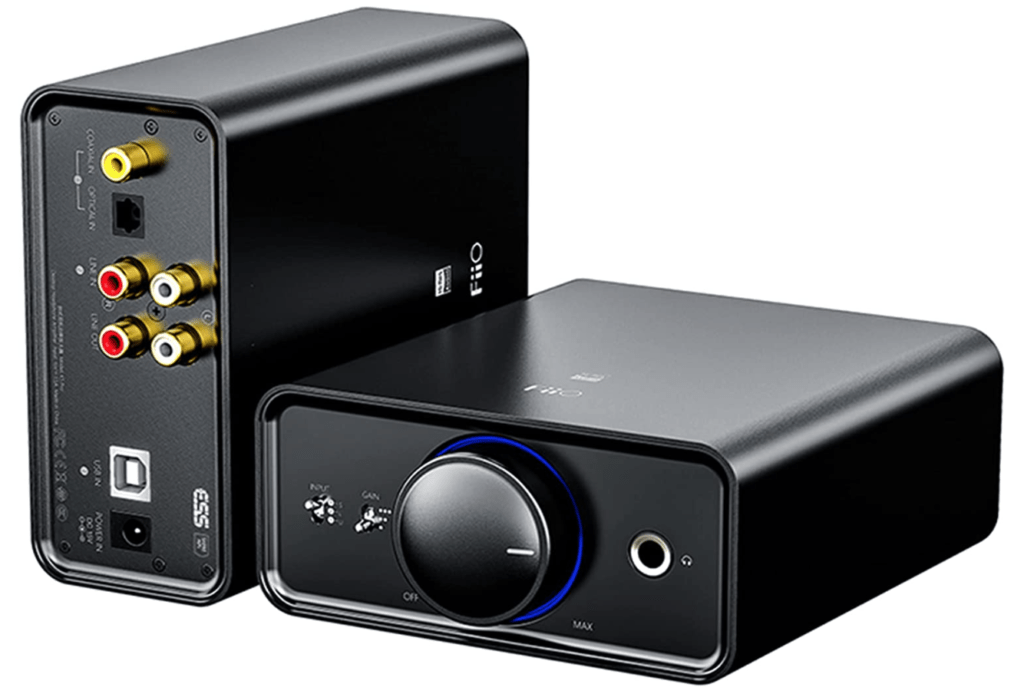
Some headphone amps only have RCA inputs.
Line Outs
The only thing that changes when your headphone amp has RCA input is the cable you use.
To connect your amp to your interface’s line-outs, you’ll need a dual ¼ TS to dual RCA cable.
Headphone Out
If you’d rather use your interfaces headphone out, grab a ¼ inch TRS to dual RCA cable.
From there, follow the steps above.
Using a Headphone Amp in Music and Audio Production
This next section will provide reasons to use a headphone amp.
We’ll also discuss how to know which amp to get.
And finally, we finish up by suggesting a few amps that’ll be a great addition to your home studio.
What Exactly is a Headphone Amp?
A headphone amp boosts low-voltage audio signals to a sufficient level for your headphones to produce sound.
First, it receives a line-level signal from a digital-to-analog converter (DAC).
Then, it boosts this signal before sending it through the headphone output.
Headphone Amp vs Audio Interface: What’s the Difference?
Headphone amplifiers supply voltage to audio signals to drive headphones.
Although audio interfaces have headphone amps, they have many other components.
As a result, headphone amps in audio interfaces tend to be limited compared to some external units.
Audio Interface
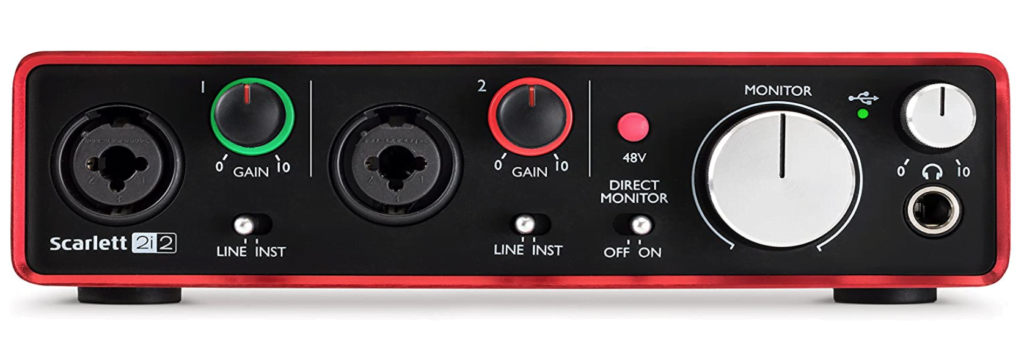
You can use audio interfaces for recording and playback.
They have inputs with preamps for capturing mic and instrument signals.
Also, most come with additional tools for recording like direct monitoring, +48V phantom power, gain controls, etc.
While audio interfaces have headphone amps, entry-level units work best with low-impedance headphones.
A dedicated headphone amp can address playback issues if you’re using high-impedance headphones.
Headphone Amp
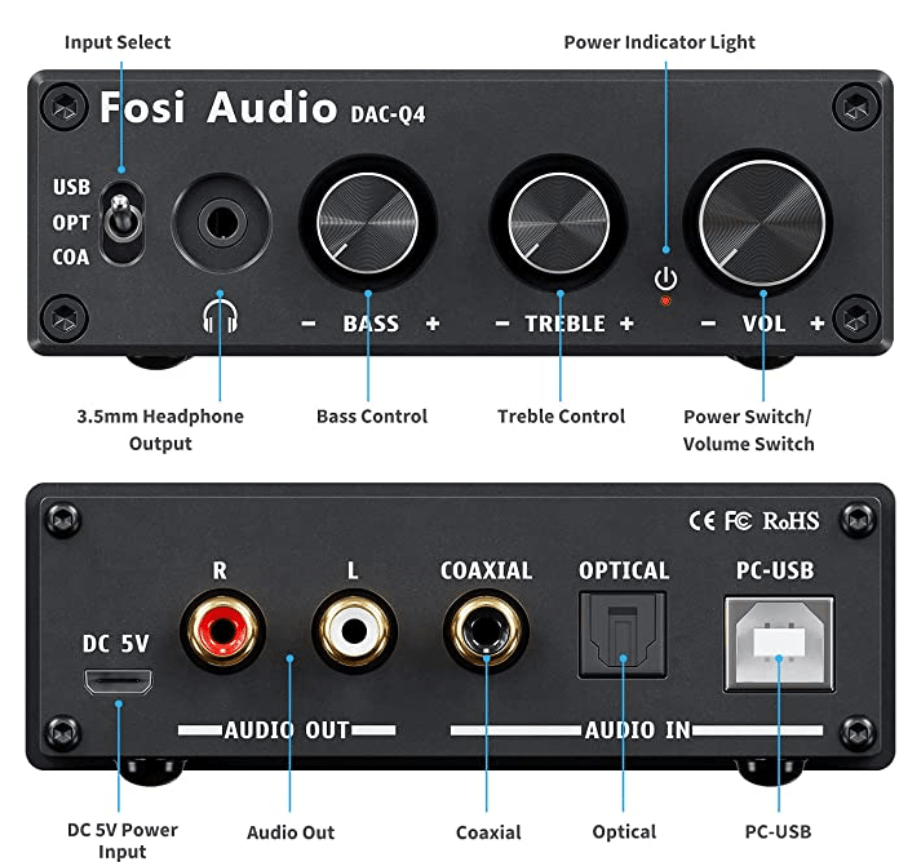
Headphone amps vary in size.
Some fit in your palm. And others resemble audio interfaces.
Headphone amps can have similar features to audio interfaces depending on the model.
They typically come with volume controls, headphone jacks, and multiple I/O.
This difference is that headphone amps are specifically for driving headphones, not for recording.
2 Reasons to Connect a Headphone Amp to your Audio Interface?
All audio interfaces have a built-in headphone amp.
However, it’s best to use an external headphone amp in two situations.
The first is to expand your number of headphone outputs. And the second is when you’re using high impedance headphones.
1. Expand your Headphone Outputs
Audio interfaces usually have a single headphone output.
But what if you’re recording an artist in your home studio?
You’ll both need a pair of headphones – you for monitoring and her for recording.
Luckily, headphone amps have multiple outputs.
For example, the Mackie HM-4 lets you connect up to four headphones.
With the HM-4 and other amps, you can also control the volume of each output for a unique listening experience on each set of headphones.
2. High Impedance Headphones
What is Impedance in Headphones?
Every audio source – including headphones – has an impedance level.
Impedance is a measurement of how much power you’re headphones need to work at their best.
More technically, impedance is known as electrical resistance.
Electrical resistance refers to a set of headphones’ resistance to the electrical current transmitted by an amplifier.
If a pair of headphones has a high impedance, it needs more voltage (power) to produce sound at a reasonable listening level.
High-Impedance vs Low-Impedance Headphones
But what’s the difference between high-impedance and low-impedance headphones?
Higher impedance headphones produce better audio quality.
However, they require more voltage to reach peak performance.
Generally, headphone amps in audio interfaces aren’t powerful enough to drive high-impedance headphones.
For the best results, we recommend using a dedicated headphone amp.
How to Tell if Headphones Have a High-Impedance
We measure impedance in ohms – usually ranging between 8 and 600 ohms.
You’ll know if you need a headphone amp based on your sound quality.
But you can also tell by paying attention to the impedance level of your headphones.
For example, Beyerdynamic DT 770 Pro headphones come in three levels of impedance: 32, 80, and 250 ohms.
32-ohm headphones work well with low audio output devices like smartphones, laptops, etc.
These days, most consumer headphones are typically 32 ohms and lower.
Entry-level audio interfaces tend to work best with headphones below 200 ohms.
However, using a headphone amp delivers the best sound quality at higher impedance levels.
Why?
Dedicated headphone amps produce more voltage than amps in audio interfaces.
As a result, interface amps tend to produce low and distorted audio with high impedance headphones.
How to Know Which Headphone Amp to Get?
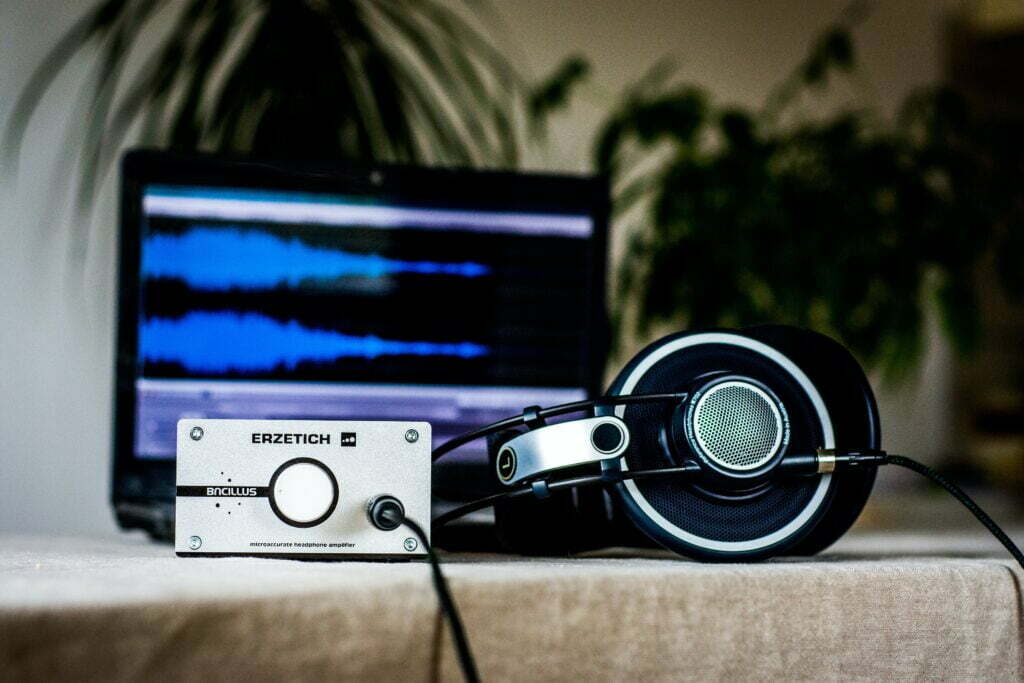
You can use the damping factor ratio to figure out which amp you need.
Generally, your headphone’s impedance should be at least eight times greater than your amplifier’s output impedance.
For example, 80-ohm headphones work best with a 10-ohm amp.
Using this same logic, 250-ohm headphones need at least a 31-ohm amp.
Do I Need a Headphone Amp if I Have an Audio Interface?
Most audio interfaces work well with low to mid-impedance headphones.
But for high impedance headphones, we recommend using a dedicated headphone amp or a high-end audio interface.
Can You Use an Audio Interface as a Headphone Amp?
What happens when you connect the Beyerdynamic DT 770 Pro 250-ohm headphones to the PreSonus AudioBox 96?
The DT 770’s produce a low volume signal making it impossible to hear details in your audio.
Most audio interfaces aren’t powerful enough to drive higher-impedance headphones.
However, a quality headphone amp can provide your high impedance headphones with enough power to deliver clear and transparent signals.
Benefits of Using a Headphone Amp with Your Interface?
- A dedicated headphone amp can improve the sound quality of what you’re listening to
- Expands the number of headphone outputs to accommodate multiple headphone listeners
- Drives high impedance headphones
Related Questions
Is the Focusrite Scarlett a Headphone Amp?
Scarlett interfaces are technically headphone amps – in addition to being audio interfaces.
Like all interfaces, Scarlett interfaces have amps built into their headphone output.
The Scarlett Solo, 2i2, 2i4, and 4i4 are said to power headphones with a maximum impedance of 200 ohms.
To power headphones above 200 ohms, you’d need a dedicated headphone amp or an audio interface that can provide enough voltage for high impedance headphones.
For instance, the Scarlett 6i6, 8i6, 18i6, 18i8, and 18i20 can drive headphones with a max impedance of 250 ohms.
Overall, if you’re using a Scarlett interface, you’re already using it as a headphone amp.
Takeaway: How to Connect a Headphone Amp an Audio Interface?
To connect a headphone amp to your audio interface, link one of your interface outputs to your amps input.
Many dedicated headphone amps can drive high impedance headphones better than a lot of audio interfaces can.
They also provide multiple headphone outputs for monitoring and recording.








